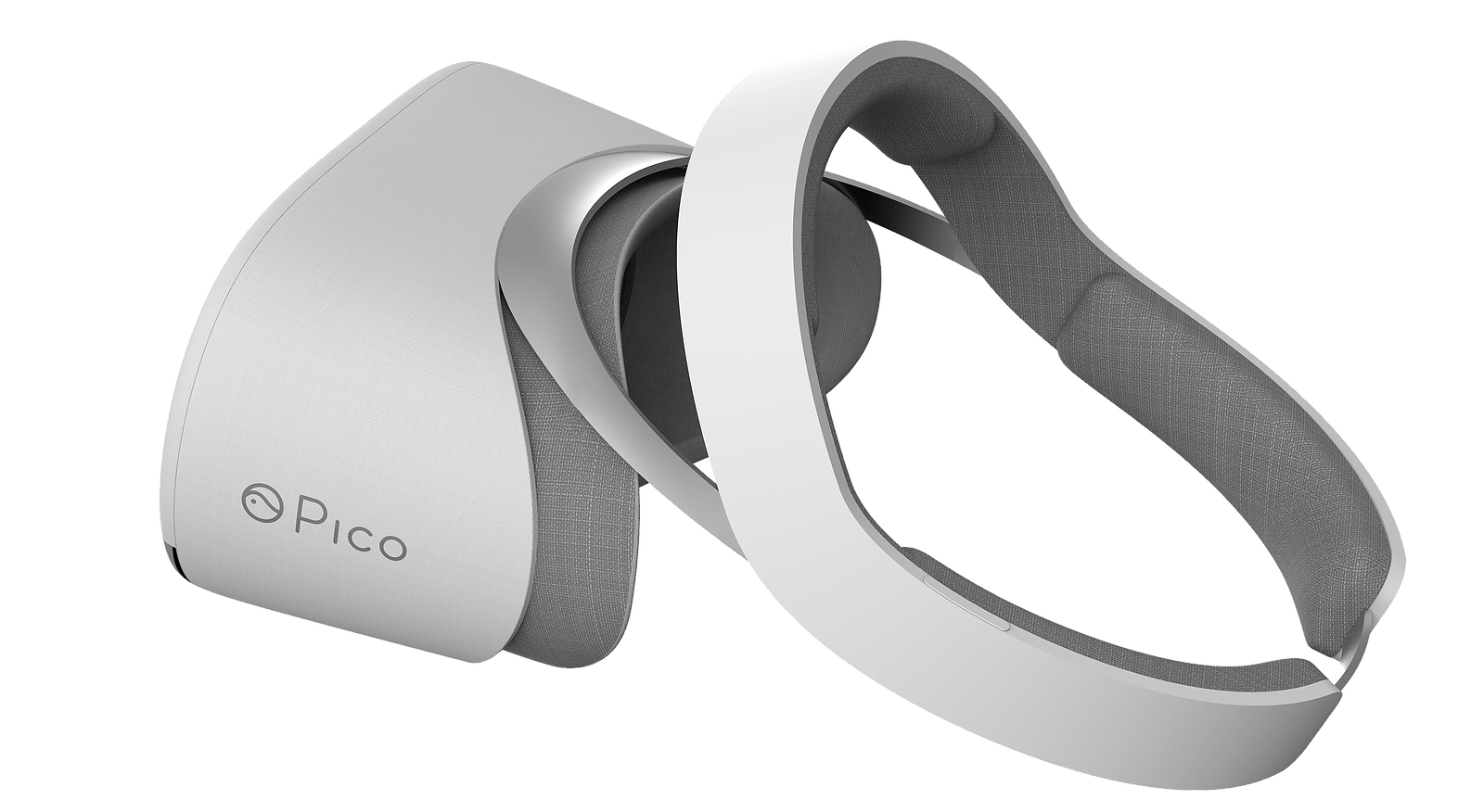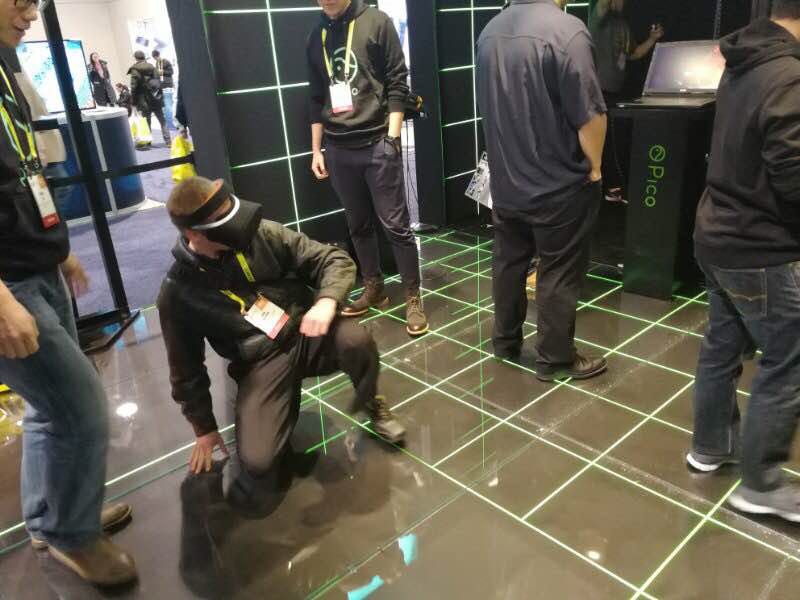
Zhou Hongwei, CEO of PicoVR. Photo credit: PicoVR.
On the top floor of a skyscraper called “Shining Mansion,” Chinese virtual reality startup Pico occupies a circular office space. The foyer has floor-to-ceiling windows that overlook Beijing city proper – both rainy and smoggy on the day I visit. Meeting rooms are named after star signs.
“At the time, everyone was like Oculus and Sony,” Henry Zhou, CEO of Pico, tells Tech in Asia. He’s referring to 2015, the year Pico was founded. “There was already news that they were going to launch a VR product, but it was only PC-based.”
“I personally felt that […] our product had to be something personal or a portable product,” he says.
The startup is tackling the mobile segment of VR hardware, where headsets rely on the processing power of smartphones. Comparable to Google Daydream and Samsung Gear VR, Pico’s devices offer an untethered VR experience that’s more convenient and accessible for the average consumer, who may not want to drop hundreds of dollars on an Oculus Rift or HTC Vive, which offer higher quality but need to be connected to a computer.
In China, which has more than 600 million smartphone users, many startups have adopted the same strategy, including Xiaomi’s Mi VR.
As smartphones get more powerful, mobile VR will satisfy the masses.
“Everyone has a smartphone, and unless you want to play complex room scale enabled games, you don’t really have a need for PC/console based system,” Matthew Lee, principal at venture capital fund ChinaRock Capital Management, tells Tech in Asia.
“As smartphones get more powerful and battery life increases and folks figure out inside out tracking on the smartphones […] I think mobile VR will satisfy the masses until there is some sort of hybrid version that runs by itself (without the phone) and is [of] higher quality than mobile but similarly priced,” he says.

Pico’s latest headset, the untethered Pico Neo CV. Photo credit: Pico.
Inside out tracking is a type of technology that enables positional tracking via headsets. That means that instead of navigating through VR experiences without actually moving – or being stuck in static 360-degree environments – headsets with inside out tracking can map your movement to virtual reality.
However, most positional tracking systems still require high-end systems like Valve’s Lighthouse, which use external cameras and sensors, as inside out tracking technology is still in its early stages.
Headsets with inside out tracking can map your movement to VR.
That’s where Pico is heading. Though its earliest headsets, such as the Pico 1S, require a smartphone, the startup is developing what are known as self-contained headsets. They try to merge the best of both worlds from PC and mobile-based devices by packing the processing power directly into the headset. Perfecting inside out tracking would further close the gap between PC and mobile VR, as it would allow interactivity without the hassle of setting up cameras and sensors.
“We wanted to create a convenient product – this was key,” says Henry. “I don’t want users to spend 5 minutes or 10 minutes to set it up. In the early stages of virtual reality, there were a lot of areas to perfect, but we insisted on making it convenient.”
“That’s why we went along the path of mobile,” he says.
During CES this year, Pico – which has more than 200 employees spread across Beijing, Qingdao, and San Francisco – made waves when it unveiled its latest flagship, the Pico Neo CV, its second attempt at an all-in-one VR headset. Its predecessor, the Neo DK, also worked without a smartphone. It packed the computing power into its controller, keeping the headset light.
Hardware hurdles
There’s a reason why high-end VR devices are usually PC-based. If you want higher quality graphics, you need more powerful processors, something that smartphones might not have. When Pico was founded in 2015, dealing with the hardware limitations of smartphones was a huge challenge.
“We had to rely on our own technology to […] improve the mobile system,” says Henry. “Our system is Android-based, but Android doesn’t fulfill the requirements of a VR experience. So we did a lot of very low-level development work in this area.”
The startup also turned to Qualcomm and other hardware partners for help. Pico is using Qualcomm’s Snapdragon 820 processor to power its Neo CV, for instance. It’s also partnering with computer vision company SensoMotoric Instruments, 3D audio company AM3D, and acoustic components firm Goertek, Henry’s previous employer.
“We realized that if we want the VR experience to be good, the capability requirements for CPU and GPU chips were actually pretty high,” he says.

Testing out the Neo CV at CES 2017. Photo credit: Pico.
Providing engaging content to users will be another hurdle. Here, Pico will again rely on partnerships, as VR content and applications can be quite broad, requiring different expertise, says Henry. Its San Francisco crew is partially dedicated to this endeavor, as it seeks out VR producers and developers in the US (it isn’t disclosing who it has partnered with yet). Like Oculus Rift and other such firms, Pico plans to distribute all this through its own app store, and is especially hopeful about educational content.
“In a classroom, giving every student a big computer isn’t very convenient,” says Henry. “If we can show that the product is good, the resolution is high, and it’s convenient to use, our product will be very suitable for applications in the education industry.”
Early days
Still, Henry is realistic when it comes to the current status of the VR industry, believing it will take at least one to two years before really great VR content comes out.
“This year, it will still be a market for early adopters and some industry-specific applications.”
The startup plans to launch its Neo CV later this year. Polishing its inside out tracking in order to get its positional tracking right, as well as refining hand and head tracking, will be crucial milestones to complete before the product launches, says Henry.
It will take at least one to two years before really great VR content comes out.
When I ask him about competing against larger, more established VR companies, he’s optimistic. “This is a very huge and promising market,” he says. “We will continue forward with them because this market is big enough.” Other brands are also developing their own self-contained solutions, such as Intel’s Project Alloy and Oculus’ Project Santa Cruz.
“Right now, Chinese hardware isn’t bad anymore. It can compete with international companies,” Eddie Lou, founder of Sandman VR, tells me. Eddie also oversees research initiatives in China for Greenlight Insights, a research firm dedicated to VR and AR.
“But China has always struggled with developing core technology. It’s not like some international companies, who have their own patents,” he says. However, if Chinese companies put more time and money into fundamental research, they can become more competitive globally, he says, pointing to Chinese VR startup Hypereal as a promising example.
This post Meet the Chinese startup cutting the cord on virtual reality appeared first on Tech in Asia.